Black Bean Sauce
This post may contain affiliate links. See my disclosure policy.
This authentic Black Bean Sauce recipe holds the grand secret to making some of the best Chinese food on the planet! It will work absolute flavor miracles for your Chinese dishes and most anything you simply want to boost with some flavor and umami! And best of all, this homemade black bean sauce is super easy and quick to make!
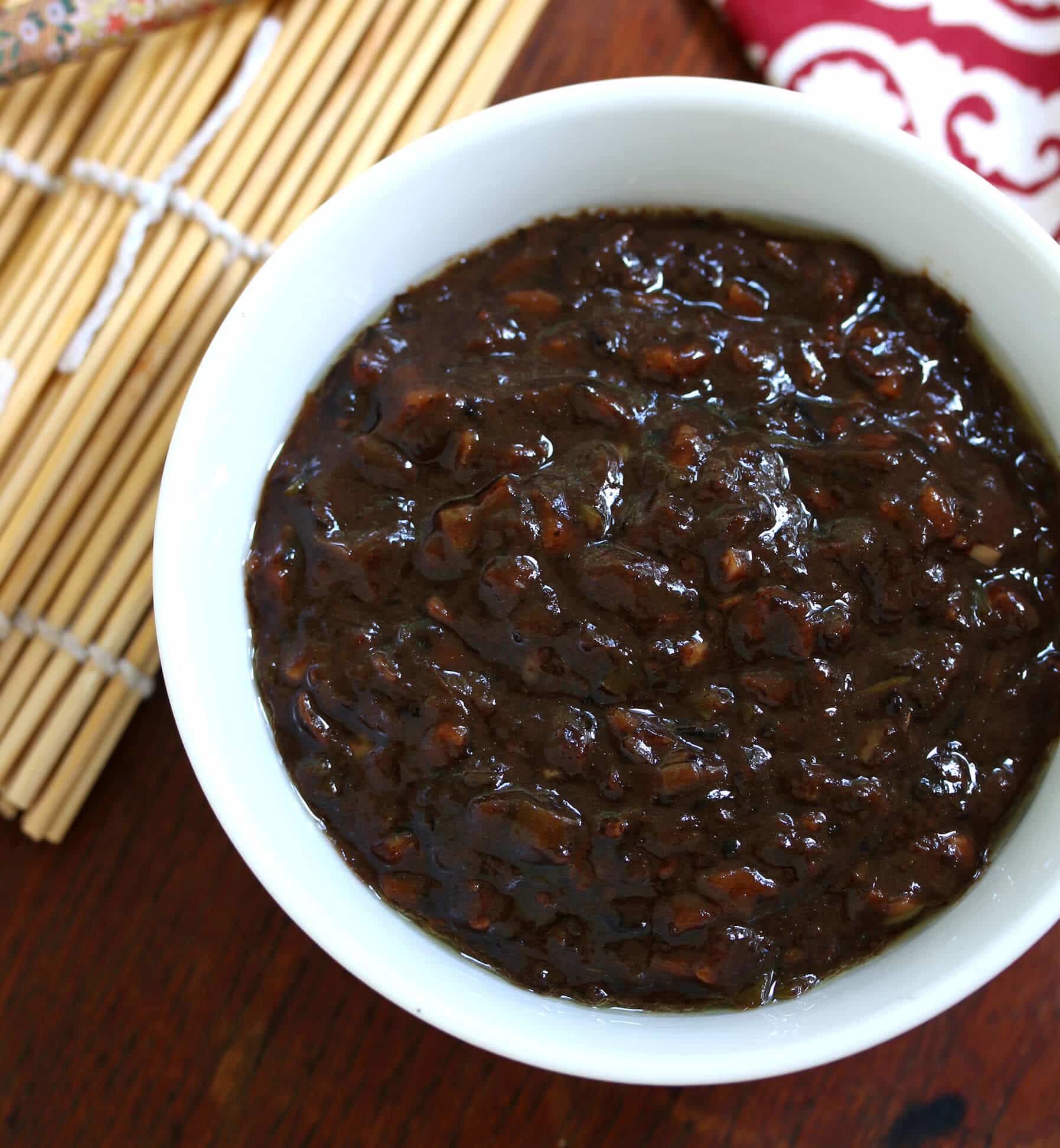
Why I Love This Black Bean Sauce
For those of you who know what Chinese black bean sauce is, you already know the wonders it does for your Asian-inspired dishes. You’ll also be happy to know how incredibly quick and easy it is to make yourself (all of 15 minutes). As with all things homemade, this DIY black bean sauce tastes even better than store-bought stuff AND you know exactly what’s in it…and what isn’t. And with this incredible flavor-boosting condiment on hand, you now hold the secret to making some of the best Chinese food on the planet!
What is Black Bean Sauce?
Chinese black bean sauce, also known as Chinese black bean paste, is a savory and pungent condiment made from fermented black beans, also known as douchi. Black bean sauce is a staple ingredient in Cantonese and Sichuan cuisine and is used in a wide variety of dishes, including stir-fries, braises, and marinades.
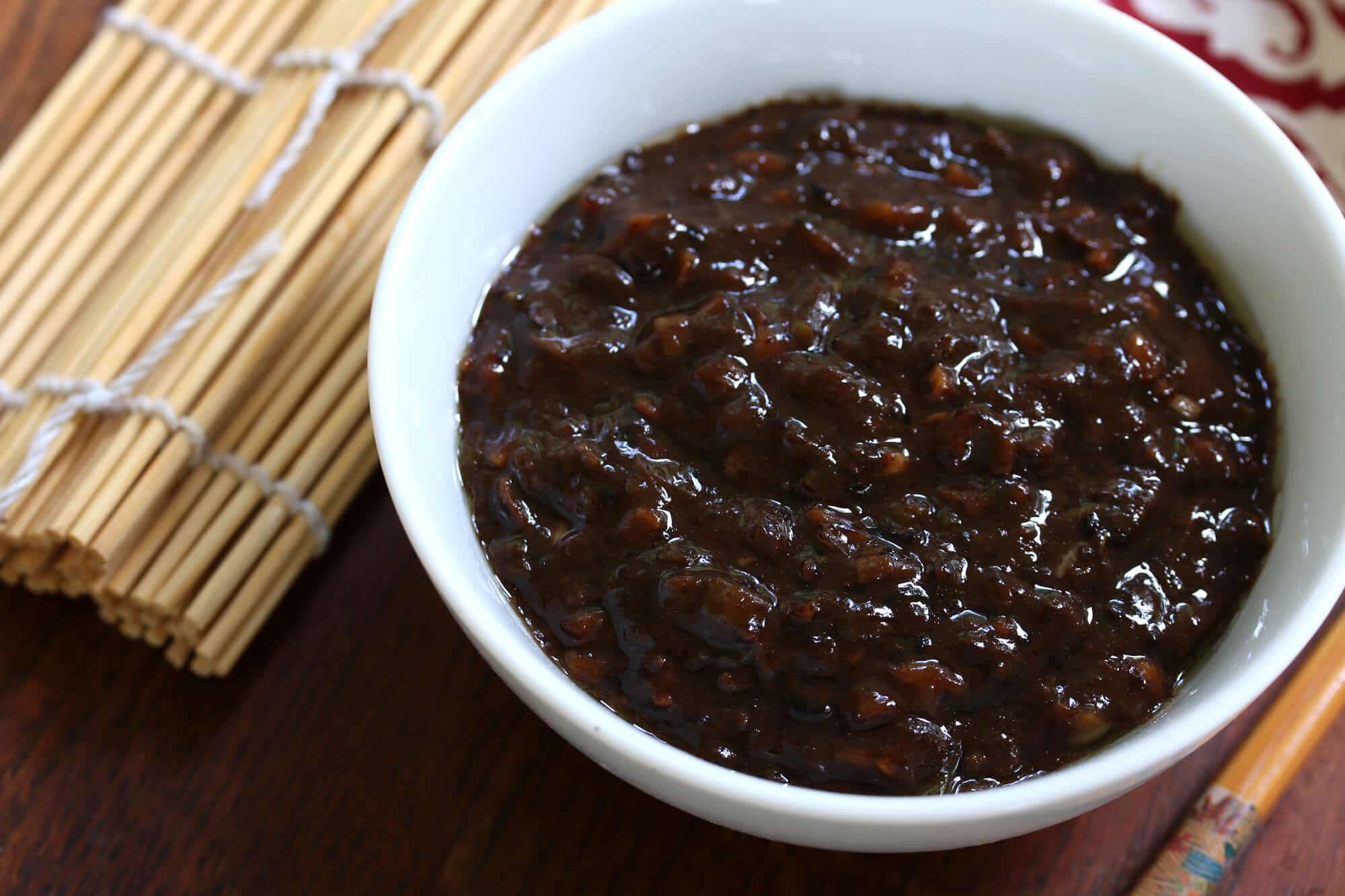
Black Bean Sauce Ingredients
This DIY black bean sauce uses just a handful of ingredients but they’re all key in delivering flavor and balance. Here’s what you’ll need:
- Fermented black beans: This is where the real magic happens with their incredibly deep, umami-rich flavor.
- Garlic: This deliver pungency, umami, subtle sweetness and tremendous depth.
- Ginger: With its spicy flavor and invigorating fragrance, it contributes a warming kick.
- Green onions: These add a mild onion flavor.
- Chinese rice wine: Very fragrant with a slightly sweet and briny flavor.
- Soy sauce: This provides the needed salt along with a bold umami flavor.
- Rice Vinegar: Less acidic than white vinegar, it’s adds a delicate and somewhat sweet flavor along with its balancing tang.
- Hot pepper sauce: For some contrasting kick to tie it all together.
What Are Fermented Black Beans?
Let’s talk about the central ingredient in black beans sauce: Fermented black beans. No, they’re not your typical black beans, aka turtle beans, that you find in dishes like Black Beans and Rice or in South American cuisine. Fermented black beans are actually black soybeans. These fermented black soybeans, called douchi in Chinese, are created through a process of boiling the beans, then inoculating them with a special mold spore (commonly aspergillus oryzae) as they dry in the sun. Then they’re typically either stored dry or in brine. This same mold variety is used in miso and soy sauce which are also both fermented products. Because of their strong flavor, fermented black beans are frequently paired with other strong flavors like, most commonly garlic and also chilies for heat. You can find fermented black beans in well-stocked Asian grocery stores or you can buy them online. They usually come in a large quantity and at a good price. They’ll keep for a long time, several months, and you can also freeze them in ziplock bags and they’ll last even longer.
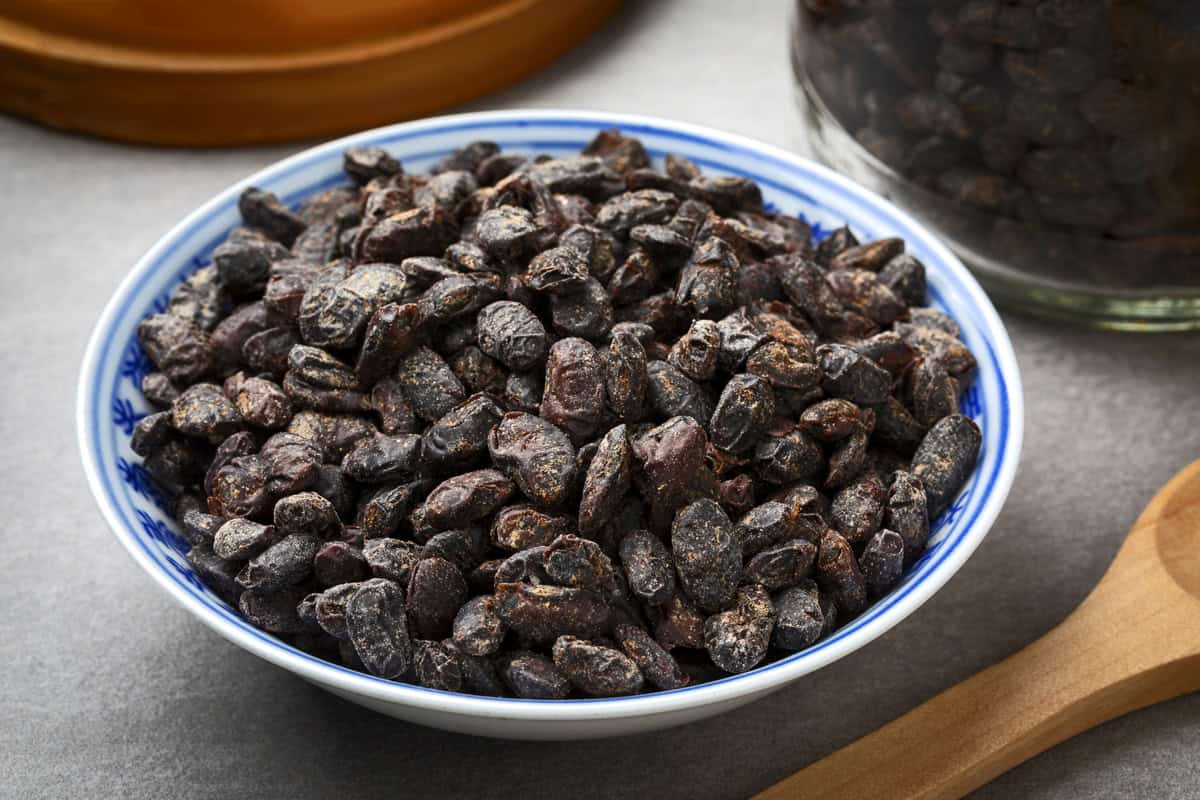
Black Bean Sauce Recipe
Let’s get started!
Place the fermented black beans in a small bowl, cover with water and soak for an hour or so. Then rinse and drain them. Mash the beans up with a fork and set them aside.

Heat the oil in a small sauce pan over medium-high heat and cook the garlic and ginger for a minute or two until softened and very fragrant.
Add the green onions and cook for another minute.
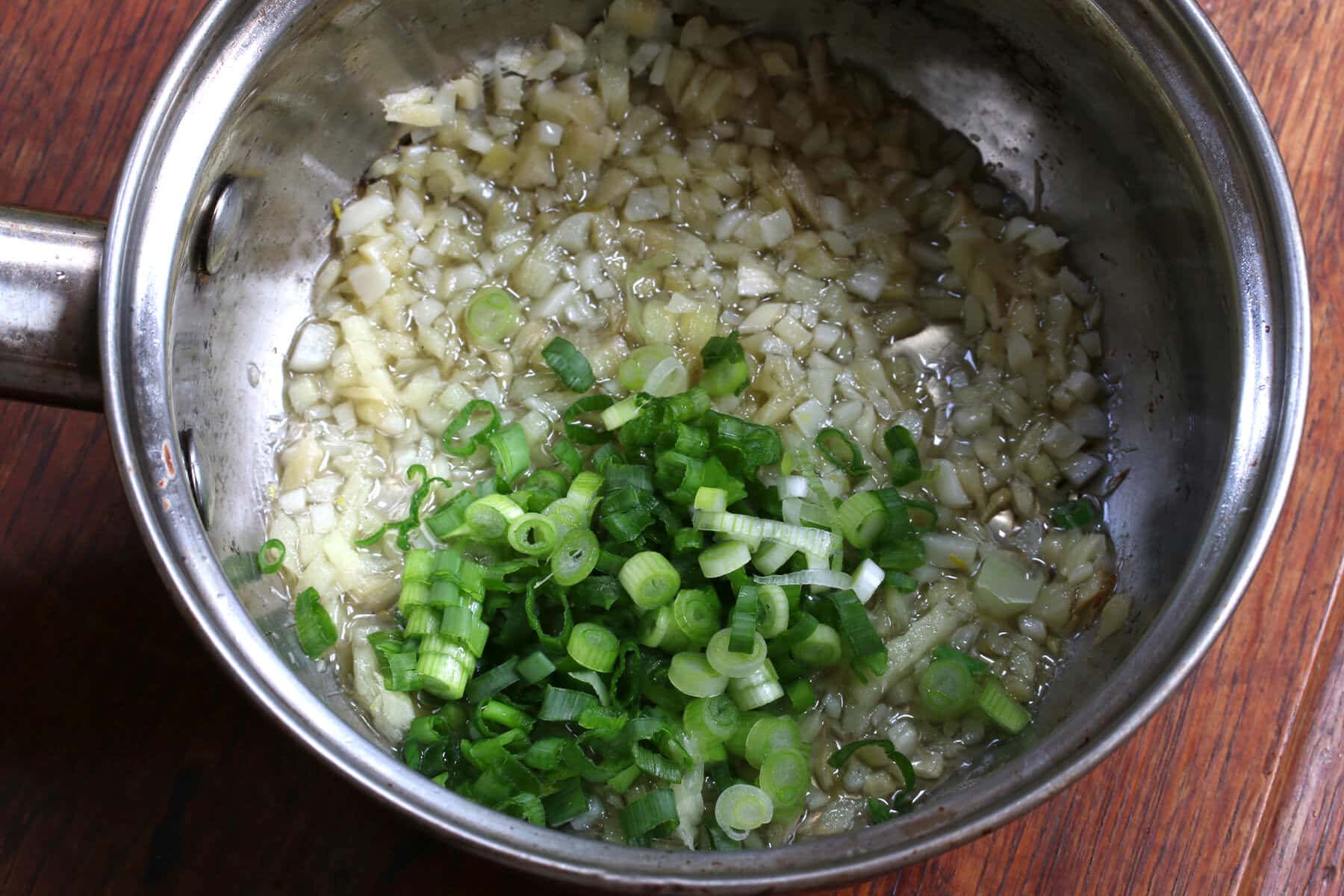
Add the mashed fermented black beans and cook for another minute.
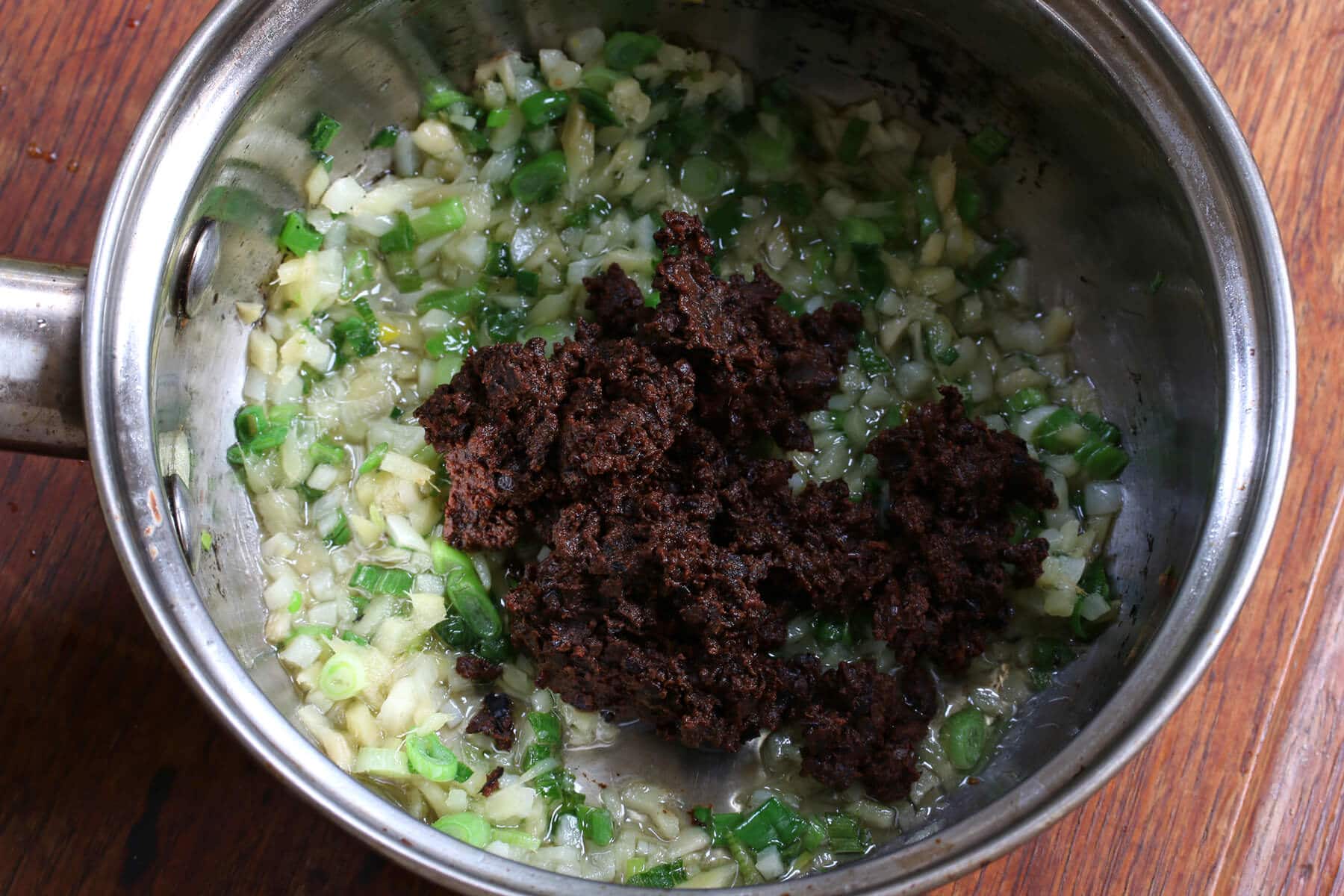
Add the remaining ingredients, except for the cornstarch, and bring to a boil. Reduce the heat to medium and simmer for 10-12 minutes or until the liquid has been reduced by half.

Stir in the cornstarch mixture and simmer for another minute or until thickened.
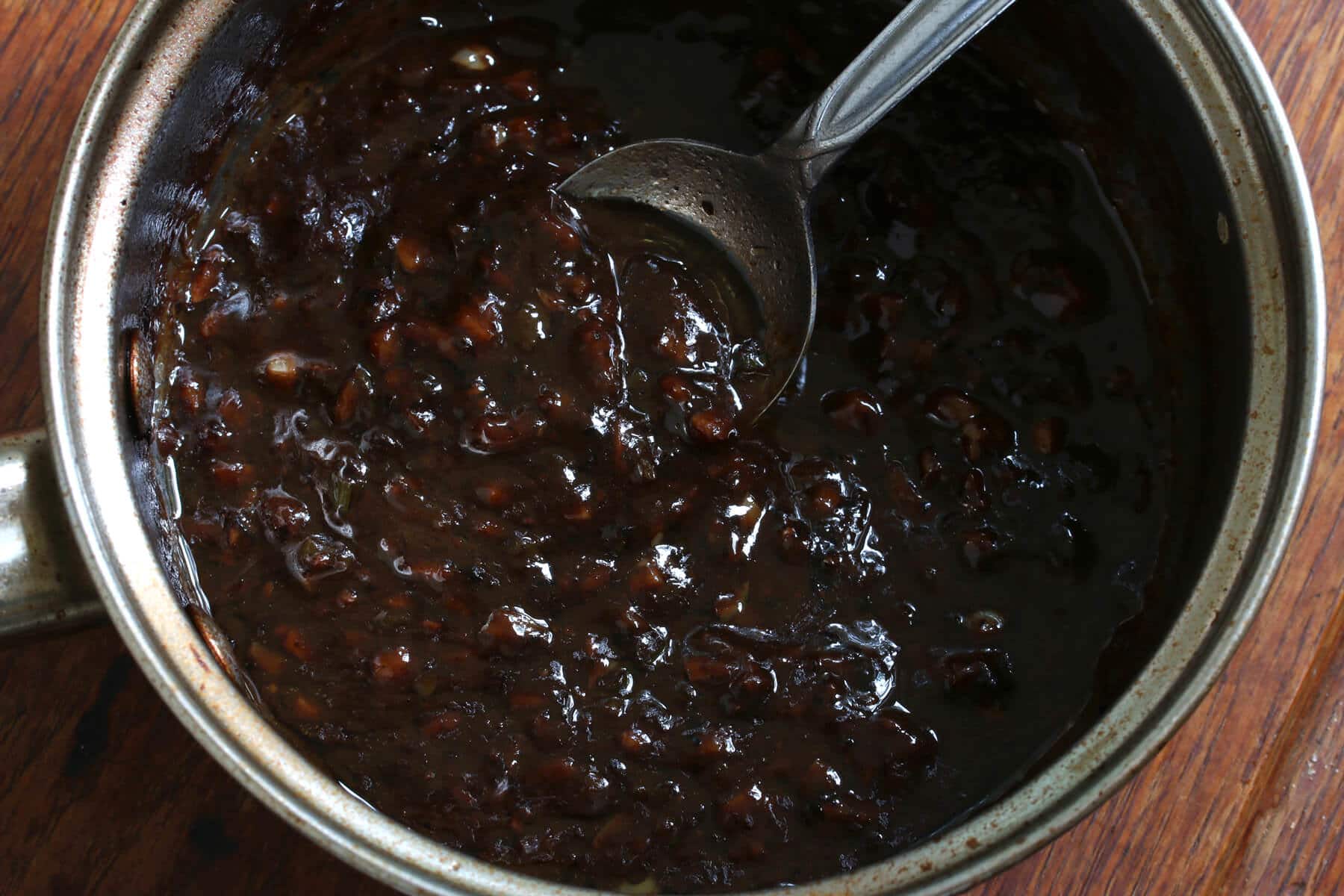
Let the black bean sauce cool and then store it in the fridge in an airtight container, preferably a glass jar. Will keep for up to 2 weeks.
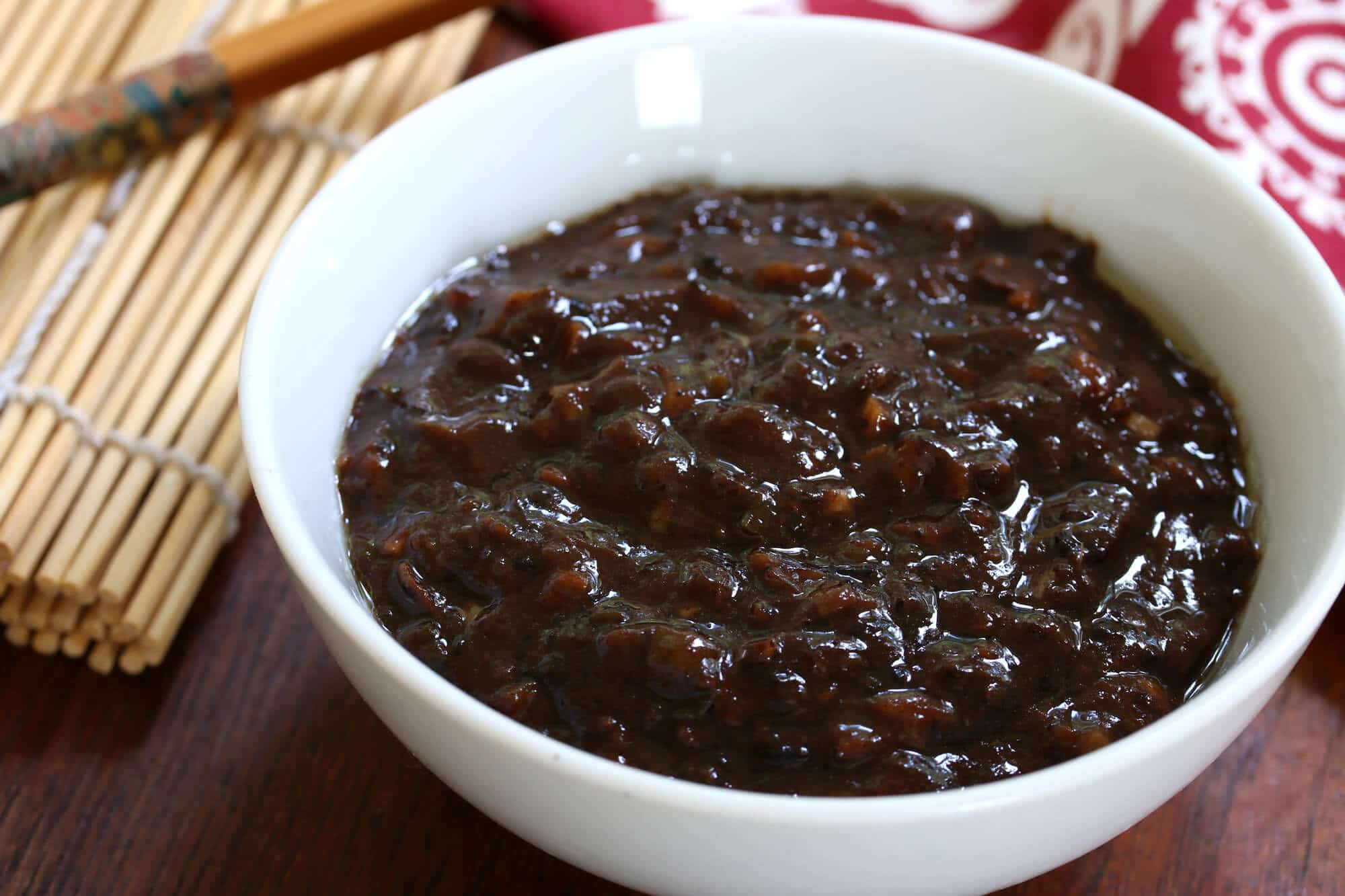
How To Use Black Bean Sauce
Black bean sauce is used any time you want to add a unique and powerful flavor boost to your dishes along with a punch of umami. Sharp, pungent, salty and spicy with a hint of sweet, it contributes flavor Chinese food like nothing else. And it’s potent, so a little goes a long way. For a flavor boost try adding a little to your favorite Chinese dishes like Chinese Beef and Broccoli, Mongolian Beef, Mongolian Chicken, Kung Pao Chicken, and Shanghai Noodles. Some other great ways to use it include:
- Stir-fries, fried rice, noodles, and tofu
- Eggs and omelettes (including Egg Foo Young)
- Chinese long beans or green beans
- Chicken, pork, beef, fish and seafood
- Asian eggplant dishes
- Steamed vegetables such as bok choy or broccoli
- Asian wraps (check out my Thai Lettuce Wraps)
- Grain salads like my Asian Wheat Berry Salad
I especially love including it in the base for most any stir-fry. Just select your protein, throw in some veggies, and add some black bean sauce with your other sauce ingredients.
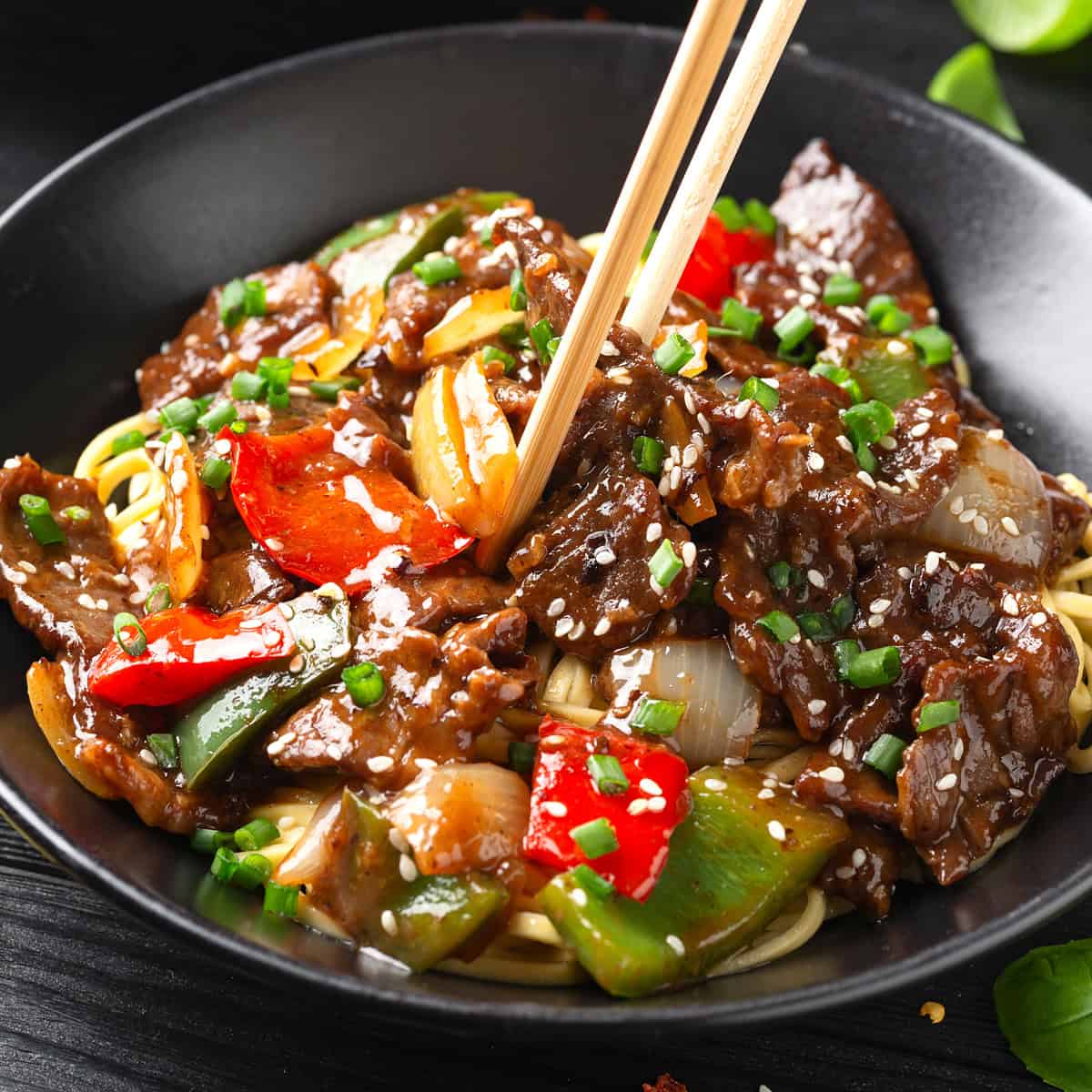
For more delicious homemade Asian condiments be sure to try my:
- Teriyaki Sauce
- Sweet and Sour Sauce
- Yum Yum Sauce
- Hoisin Sauce
- Eel Sauce
- Plum Sauce
- Kecap Manis
- Sweet Chili Sauce
- Ponzu Sauce
- Chili Oil
- Char Siu Sauce
- Ginger Sauce
Save This Recipe
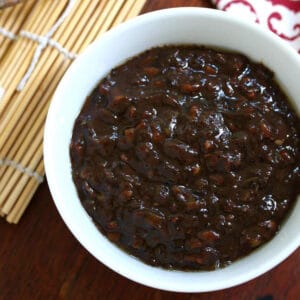
Black Bean Sauce
Ingredients
- 3 tablespoons fermented black beans , soaked in water about an hour then rinsed and drained (if you prefer a stronger and saltier flavor, use more beans)
- 2 tablespoons oil
- 2 tablespoons finely minced garlic
- 2 tablespoons finely minced ginger
- 2 green onions , finely chopped
- 1/2 cup vegetable or chicken broth
- 2 tablespoons Chinese rice wine (can substitute dry sherry)
- 1 tablespoon soy sauce
- 1 teaspoon sugar
- 1/2 teaspoon rice vinegar
- 1/2 to 1 teaspoon hot red pepper sauce or sambal oelek , for heat (optional)
- 1 1/2 teaspoons cornstarch dissolved in 1 tablespoon water
Instructions
- Mash soaked and drained fermented black beans with a fork and set aside.
- Heat the oil in a small saucepan over medium-high heat. Add the garlic and ginger and cook for a minute or two until softened and very fragrant. Add the green onions and cook for another minute. Add the mashed beans and cook for another minute.
- Add all remaining ingredients, except for the cornstarch mixture, and bring to a boil. Reduce the heat to medium and simmer uncovered for 10-12 minutes or until the liquid is reduced by half. Stir in the cornstarch mixture and simmer for another minute or until thickened.
- Let the black bean sauce cool and store in an airtight container (preferably glass). Will keep for up to 2 weeks.Makes a little more than a cup.
Notes
Nutrition
Originally published on The Daring Gourmet March 4, 2016



















I made this sauce today, so easy and so so tasty!
Definitely making this again.
🙏
Thanks so much, Sylvia, I’m happy you enjoyed it!
Decided I need to learn how to cook at the age of 60, yes I can do simple stuff, beans on toast etc. So I love oriental food, thought I would try this to go with Stir Fry beef/Chicken etc, a big step for me, had to trek the oriental supermarkets for some stuff, especially the fermented bean.
Took me ages to make it, and then a stir fry with it, I have learnt so much making this sauce, and it tastes fantastic, it has inspired me to try so many different recipes, glad I found this on your website.
That’s truly fantastic that you decided to tackle something like this during your “early learning” stages of cooking, Mark. Congratulations, I’m so happy you enjoyed it, and keep up that adventurous spirit!
Thank you so very much for this excellent recipe! I have celiac and I always look for recipes to recreate sauces for Chinese and Korean cooking. This was great! I did find some fermented black beans on Amazon (Hoosier Hills) and they said that while the beans are not fermented with wheat flour (as is usual for Chinese fermentation) they are in a facility that has wheat products. I had no problem with them. I will be trying to can this recipe and will update you if successful.
I’m so glad you enjoyed it, Carole, thank you!
This is hands down the Best Chinese black bean sauce recipe. So easy and tasty. We bought a jar of dried fermented black beans specifically to make this sauce for stir fry and other Chinese dishes. Adds a depth of flavor that really is just so delicious. Use recipe exactly, no tweaks needed.
Thanks so much, CJ, I’m thrilled you enjoyed it!
Thank you for the recipe. Is this the same as the black bean sauce that is used in Mapo Tofu (doubanjiang) or can it be used as a substitute? Thanks!
Hi Kerrie, map tofu typically uses a spicy chili-based bean sauce but you can certainly still use this black bean sauce as a substitute and then add some extra heat in, like hot sauce, if you like.
I just made it, but I mixed with unsalted black bean from western supermarket, of course not black soybean. I sautéed a can of black bean add 2 tbsp of pork lard and 1 tbsp minced garlic, stir it until becomes paste add 1 tbsp Chinese fermented blackbean, stir until mix well add 2 tsp of sugar and 2 tbsp rose wine. I use for seasoning boiled egg noodle or chunjang noodle in Chinese style. Love it very much. I’ve tried to use Korean style black bean paste for chunjang noodle but not as good mine. Thanks for inspiration.
Thank you for this. Just curious? I used to frequent a small Chinese restaurant run by an old and delightful Malaysian woman. I always ordered pork fried rice with scrambled egg on top for breakfast. A town favorite. Here’s the thing, she served it with a black salsa. It was thin, black and very chunky with garlic, ginger, serrano chilies, cilantro and green onion. It was not too salty and you could just gag that salsa on top! Soooo good! But when she had to close, she gave no one her recipe. Any ideas?
Could it be sambal?
You call for rice vinegar and chinese rice wine.Aren’t they the same thing.
My understanding is, chinese rice wine is a fermented Wine, whereas rice wine vinegar is a Vinegar. I don’t use them the same way in my cooking anyway.
No. One is vinegar, one is wine. Look at the labels carefully. Mirin is a rice wine that comes from Japan. It is not vinegar. I’m not sure where on gets Chinese rice wine but maybe the Mirin could substitute?
Isn’t Saki a rice wine?